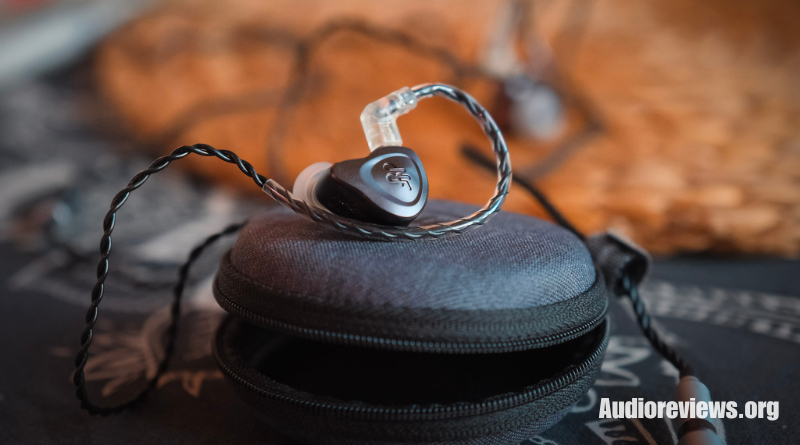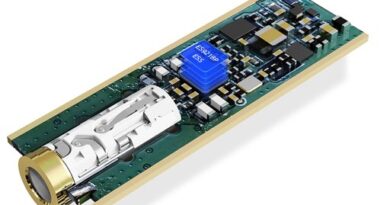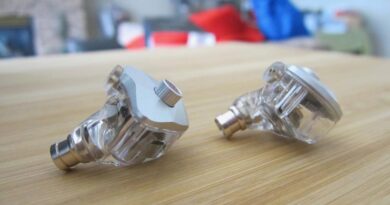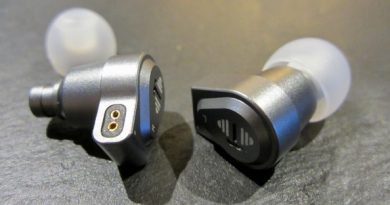NF Acous NA2+ Review – A Hot, Harsh Mistress
The NF Acous NA2+ is a technical tour de force but ultimately won’t win the hearts of many due to the extremely introspective tuning.
PROS
- Details and imaging are great
- The metal shells exude luxury beyond the 169$ pricepoint
- Easily wearable for a full day
CONS
- Too much top-end tilt
- The cable is rather tangle-happy
- Coloration is hard to EQ away
In this Article
Introduction
The skinny is that NF Acous (previously “NF Audio”) pride themselves on being primarily a pro-audio manufacturer and claim that they were the custom IEM pioneers in China. I love to hear dynamic driver IEMs and the NA2+ claims to use their in-house-made drivers. Color me interested! I’ve got plenty of pro audio experience from my tenure at Sonarworks to give their NA2+ a fair shake on both listening and production fronts.
So let’s try out the NM2+ and see how well the pro-audio pedigree works for us, music lovers.
Specifications
Drivers: 1x dynamic driver in a ported double-cavity enclosure Impedance: 32 ohms Sensitivity: 107dB/mW Frequency Range: 9-40,000 Hz Cable: Silver-plated copper, twist braid, 1.2m Connector: 2pin 0.78 mm, 3.5mm TRS with an optional 6.35mm adaptor Tested at: 169$ Purchase Link: Linsoul, Shenzhen Audio, Hifigo |
Physical Things and Usability
| In The Box: IEMs, S/M/L balanced and wide-bore tips, 1.2m cable, 3.5mm jack, 6.35mm adaptor, carrying case. |
| Appearance, Haptic, Build Quality: in terms of looks and overall feel the NA2+ sit nice in their <200$ price bracket. |
| Ergonomics: the cable has low microphonics, and good length but tends to tangle up. |
| Comfort, Fit: the shell fits well and should fit smaller ears as well. |
| Isolation: average due to acoustic porting. |
Build quality
Unlike NF Acous first-generation IEMs that used transparent plastic shells, the NA2+ takes a similar approach to the NM2+ and goes for cast and machined aluminum. The anodizing is of high quality, however it remains to be seen how it holds up to prolonged exposure to ear sweat and oils. Having seen Macbook bodies with corroded marks from arm sweat, I have some concerns. At the same time, the NM2+ look very nice!
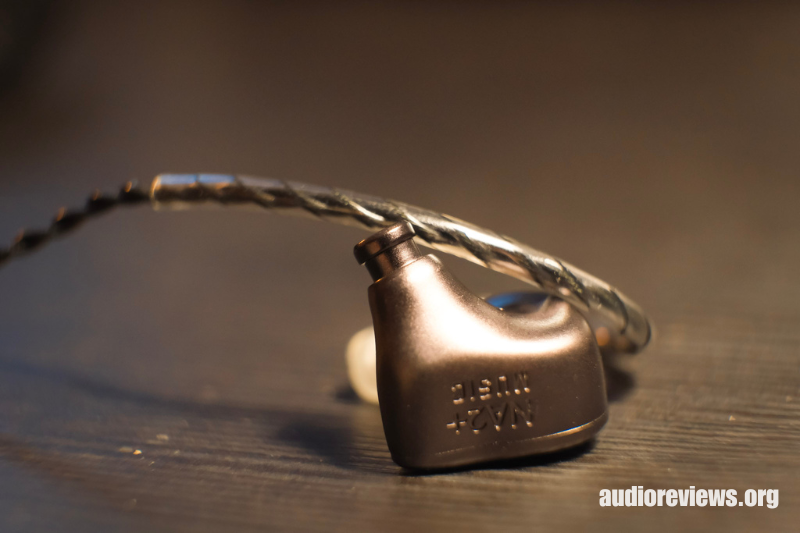
The nozzles are unibody with the earshell and have retention lips which do a good job of making sure you won’t ever have to fish out eartips out of your skull. At the end of the day, I’ve been the guy on a film set sticking Leatherman pliers into their ears. Not a fun time. It also prevents the tips from coming off and falling somewhere never to be seen again.
Eartips
Together with the NF Acous NA2+ you’ll get two sets of eartips. They’re both made out of a rubber-like material and seem rather stiff at first. One set seems like your average stock IEM tips and the other is supposed to be wide-bore which NF Acous call “atmospheric”. After spending a few days with both sets, I came to the conclusion that the wide-bore tips seem to work better with the NA2+.
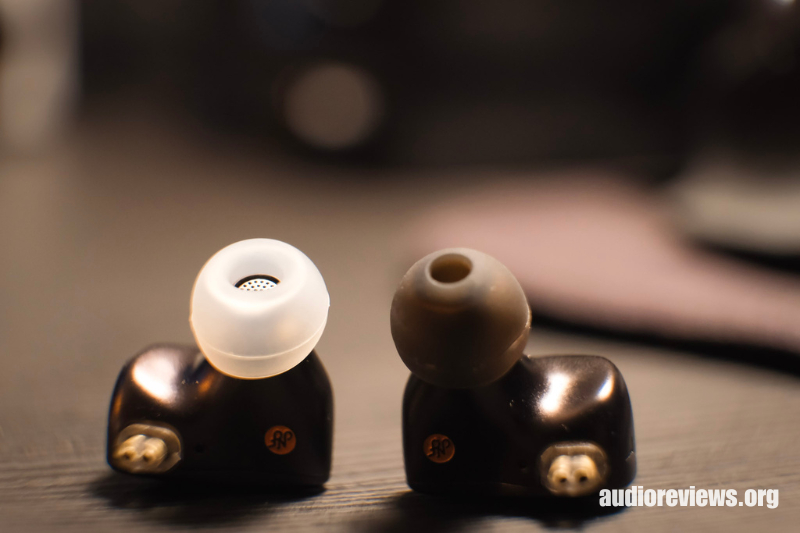
Overall the NA2+ seemed pretty insensitive to insertion depth and both tips offered decent isolation provided the right size was selected. The wide-bore tips also come in a “tiny” size which makes them suitable for individuals with very narrow ear canals. As always, I went with the medium size which felt consistent with medium tips from every other IEM I’ve tried.
Sound quality and signature
Test setup: On the go, I used my Qudelix 5K and FiiO Q15, while desktop use was tested mostly on the FiiO K19 and SMSL SH-X combo. Occasionally Ifi Go Bar Kensei and FiiO KA17 were used.
At 107dB/mW the NA2+ isn’t too sensitive which means that noise shouldn’t be an issue. All of my sources were able to drive it well and it was able to display the minute differences between them. Even laptop headphone outputs should do the trick, just don’t expect them to fully show the potential of the NA2+.
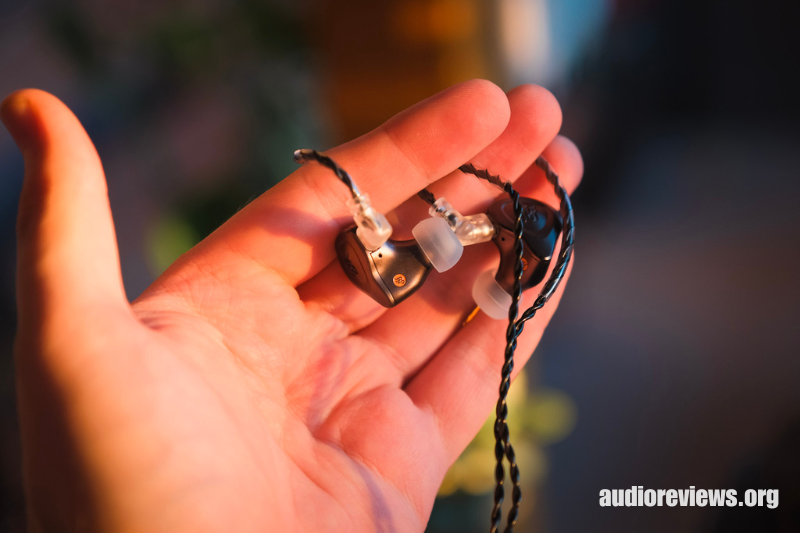
In many regards listening to the NA2+ is similar to a pair of open-back headphones. Of course, there’s no openness, but the low-end extension is almost the same. Gone is the LF shelf which many have gotten used to with IEMs. The bass is in line with the mids which creates a very transparent low-end but sacrifices the visceral impact I’ve grown to expect from dynamic driver IEMs.
The question here is what you’re looking for in an IEM. If you’re coming from very diffuse-field tuned headphones like the stock HD800 or Beyerdynamic T1, the NA2+ will seem familiar. To me, they ultimately were too bright to enjoy. For audio work, they’d be fine because there are oodles of resolution and the lack of LF-shelf means thicker-sounding mixes.
Just like in many other IEMs the mids are hard to blame and the highs generally are fine, if a bit rolled off at the very top, compared to IEMs with dedicated supertweeters. The overall balance is top-heavy due to the low-end being erm… low. To remedy this I looked up some measurements and tried my hand at corrective EQ. At the very least a peaking filter at 24Hz with +6dB gain and 0.5 Q-factor was needed to bring the lows up.
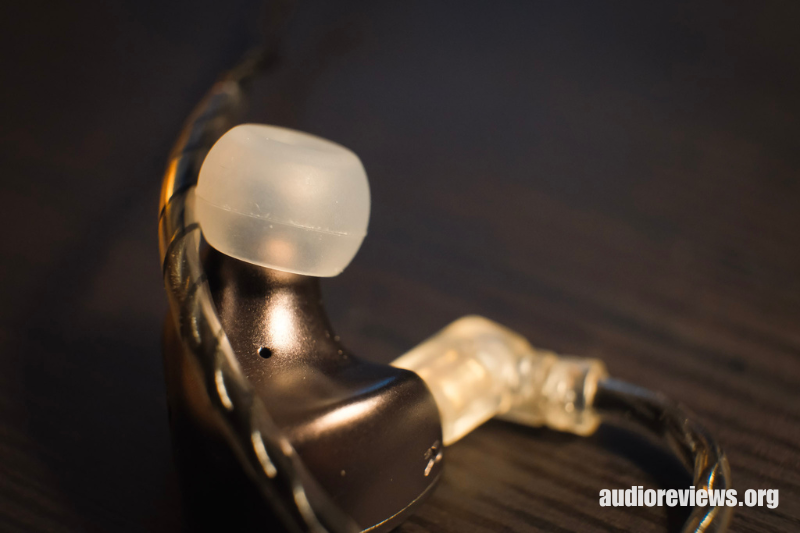
Select comparisons
Simgot EA1000
On one hand, both of these IEMs offer a bright-ish sound signature with plenty of technical prowess. Where the EA1000 comes out on top is fun and general listening engagement. This is mostly due to the more pronounced bass shelf which immediately adds punch to recordings. Sure, the EA1000 can become fatiguing with brighter equipment chains and more abrasive music but it’ll happen way later than with the NF Audio NA2+.
Go for the NA2+ only if you value insight above everything else. The EA1000 is more versatile and thus a safer recommendation in most cases even if both IEMs have their peculiarities.
Pairing notes
Two factors have to be kept in mind when tailoring the accompanying system to the NF Acous NA2+.
First is the choice between trying to mend the bright tonal response somehow or just rolling with the punches. I’m not aware of any portable dongle DAC that will be warm or bassy enough for this. FiiO’s offerings which offer PEQ is your best bet if you’re willing to roll up your sleeves and dial them in.
Then comes the question of equipment technical capability. The NA2+ is very resolving and will play along with even very upmarket upstream equipment. At the same time, I don’t think that it’s required to go overkill as portable use is usually very limited by external noise. For desktop use a nice DAC and amplifier will be well appreciated.
Concluding Remarks
The NF Acous NA2+ is a treblehead’s and detail-freak’s delight. For others, I’d only be willing to give a “listen before buying” recommendation. And even then only if you have a more omnivorous primary IEM. I will admit that the overall presentation, packaging, and build left an impression on me about NF Acous being a mature brand. Their house sound is too bright for my tastes but I can see people enjoying this non-standard tuning.
My verdict – 3/5
Disclaimer
Thanks to NF Audio for supplying the review sample. As always, they had no say in the review process and didn’t see the review before posting.



